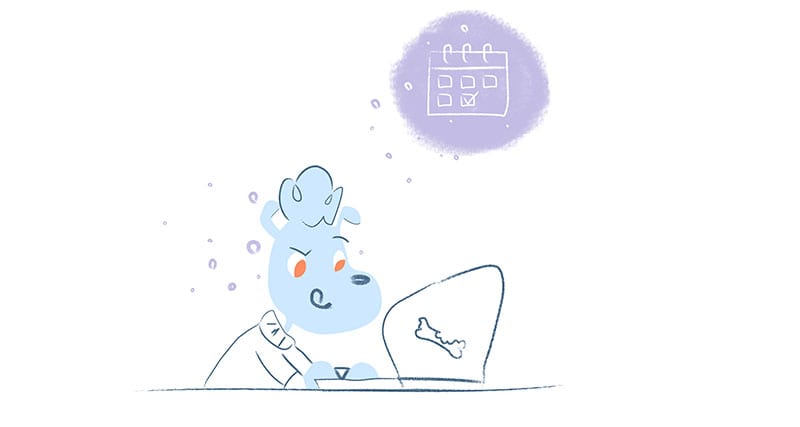

Virtual meetings are a terrific method to engage with faraway prospects, customers, and colleagues. We are all getting used to virtual meeting etiquette — but here is a reminder. There are clear distinctions between in-person meetings and virtual meetings, but some question the etiquette differences between the two.
You are likely attending virtual meetings on a variety of platforms. Therefore, choosing the best selection of platforms is one of the essential guidelines. In addition, you’ll want easy-to-use software that everyone can quickly figure out.
Popular video conferencing software includes Zoom, Skype, Google Duo, Microsoft Teams, etc. Each platform is distinct in its own way.
1. Learn Screen Sharing
Most meetings will require screen sharing of some kind, and you’ll likely want live annotations. Some of these characteristics are vital during a virtual meeting, so carefully choose the platform that’s best for your team.
You will want to take the time to learn the program you’ll use and all of its features — and be ready to run through its benefits with your employees quickly. Become familiar ahead of time to use any necessary features during the meeting. You’ll want to be able to find relevant alternatives and distinct helps for your team throughout the meeting.
Learn how to utilize features in a smooth transitional way, not simply how to use them. This is crucial if you are the host.
2. Plan Ahead
Preparation is required to prevent a last-minute rush. If you’re the host, send a meeting request with a plan to all participants before the call.
Your meeting request and plan should include who will be present and any session expectations. Sending your plan with your email invite gives attendees time to adjust to anything they must prepare for. You may use many email templates for your invite. Notify attendees if they are required to make contributions during the meeting.
3. Set Visual Settings Before Call
Also, verify your platform’s audio and visual settings before initiating your video call. Next, remind everyone to restart their computer before the meeting begins — these two things reduce call time spent on technical difficulties. Finally, assign duties way ahead of time, so people have sufficient preparation time.
4. Prepare Materials Ahead
Participants should prepare all they need to present ahead of time — if you have given them the information ahead of time. If you have shown your preparation by having information in your invitation email — then your own preparation teaches everyone how to prepare any papers or information needed at the virtual meeting.
For employees — If the organizer hasn’t issued expectations or agendas, ask if there is anything you can do ahead of time. If the host sent you materials, study them before the conference.
5. Keep a Strict Timeframe
Being on time for a meeting is vital whether the discussion is virtual or not. Professionalism includes being on time. Attendees won’t enjoy waiting for the boss or host since they can’t start without these key people there. Therefore, the boss or host should be first in the queue.
Attendees see late arrivals as unreliable, so leadership will want to set the correct expectations for regular meetings and virtual meetings. If it’s a work conference, you’re sending the best message of reliability and professionalism by being on time and having all information organized and ready to go.
Your latecomers will miss several agenda items, and you may choose to have covered items clearly displayed in the corner of your screen if you are the host. When you are the host, you don’t want team members or employees missing vital information.
Remember to give all participants the meeting length and then end the meeting on time — no matter what. A conference shouldn’t go beyond time — and neither should any other office meeting or virtual meeting.
No meeting should go beyond a two-hour timetable — and most sessions should take much, much less time. Sometimes, a quick meeting done twice is more effective than a two-hour bore-fest. When you stick to your timeframes, you’ll notice that attendees are more careful of time and are careful not to talk more than necessary. If needed, ask your chatters to and keep their remarks brief.
6. Dress Properly
Attending a virtual conference requires professional attire in many companies, less in tech. But even at home, you shouldn’t dress casually. Instead, dress as though going to a regular conference.
Ask your video host if there is a conference dress code and dress correctly — you may wish to dress well even if there is no dress code.
Jewelry is often overlooked as something that can be an issue in a meeting. Most companies don’t address the issue of jewelry in a virtual meeting — but you can likely remember the last person who sat and twirled an oversized fat earring all during a meeting. Don’t be the earring twister that curses all other virtual attendees.
It’s not just about looks. When they talk, women should remember that jewelry dangles and bobbles like a bobblehead doll, and sometimes it’s loud. The same goes with bracelets while typing. Jewelry can also cause issues with the audio quality of a virtual meeting.
7. Use a Solid Backdrop
You should already be aware of the value of a solid backdrop. After your face, people will notice your backdrop — take care of the backdrop issue. If you work from home, you should have a home office. Otherwise, select the perfect space with a simple backdrop.
Make sure you’re in a room that others will not access during your virtual meeting. Remove any unsuitable items from your backdrop. Certain things may seem unimportant to you — but they can certainly distract other attendees.
8. Careful of Clicking and Clanging
I worked with a woman for years, and the whole team admired her bright yellow wall in her virtual meetings. Then, when we met at a world conference one year, she told me her backdrop was a shower curtain, and she sat in the bathroom for meetings because the light was so good and no one bothered her. I took from this encounter that everyone can find the correct place for virtual conferences and can look professional — even in the bathroom.
Avoid strong lights and adjust video brightness and contrast. A green screen has long been considered one of the better solutions. It goes without saying — figure out your backdrop solution way ahead of time and try to keep the same backdrop for meetings with the same people.
9. Minimize Distractions
Distractions may disrupt a video call. Unless you are specifically waiting for a call you must take — you should leave your phone away from your meeting. Or turn off your computer if you use a phone for your virtual calls. Everyone can see that you are looking at your phone or texting (or playing games) even if you think they can’t.
Stay attentive and avoid distractions. To prevent alerts, close all other applications and browser windows.
An easy disruption to a video call is multitasking. You should only be doing things that are related to the meeting.
10. Watch the Talking
A conventional conference can tell you who the primary speaker is, but it’s tough in a virtual conference with numerous faces or if there’s noise.
Keep your microphone muted, so your mic so your noise doesn’t bother anyone, and don’t speak while someone else is speaking.
If it’s an interactive conference, you don’t silence your mic. But you’ll want to be silent and only talk when you have something meaningful to say. So please don’t be the one in the meeting that has to comment on everything. You bore us — shut your yapper. Silence is golden.
In a video conference, remember that many people have slow transmissions, so speak distinctly and maybe a little slower. Speaking a little slower helps others catch up with you.
For the host in a worldwide meeting — you may wish to have text translation across the screen for non-native speakers.
Conclusion
Virtual meetings are not going anywhere — and may, in fact, accelerate in usage, so prepare your space, backdrop, camera, and any other equipment you need and be ready at a moment’s notice for your next virtual meeting.
[Related: Ways to Have Some Fun While in Virtual Meetings]
Image Credit: Andrea Piacquadio; Pexels; Thank you!











Howie Jones
My name is Howie and I'm a Customer Success Manager at Calendar. I like to ensure our customers get the best experience using our product. If you have questions email me howie at calendar.com